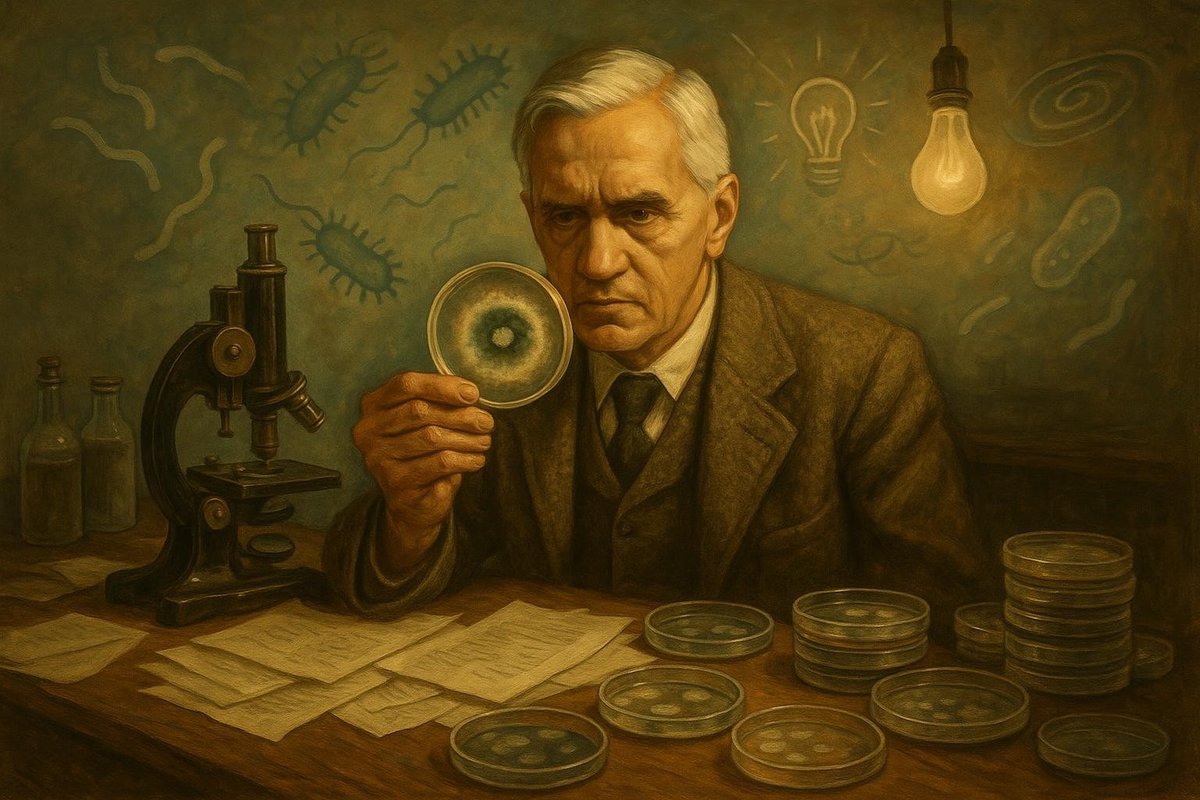
Wandering into the Unknown
Imagine a scientist’s laboratory, bustling with microorganisms and untidy yet vibrant chaos. In 1928, Alexander Fleming returned from vacation to find something astonishing. He noticed that a mold had contaminated one of his Petri dishes, yet incredibly, it had killed the bacteria surrounding it. This unexpected observation was the dawn of penicillin, a miracle that would revolutionize medicine.
Before Fleming’s accidental insight, bacterial infections were often fatal. Doctors had limited tools to combat them, relying mostly on antiseptics and basic hygiene. But Fleming saw the world differently, and in this unexplored chaos, order was waiting to be found.
- Penicillin was an accident—chaos meeting order.
- Before its discovery, bacterial infections were dire.
- Fleming’s keen eye transformed an accident into opportunity.
This sets our stage for a deeper exploration into one of the most serendipitous breakthroughs in medical history.
The Alchemy of Chance and Observation
Alexander Fleming didn’t set out to change the world on that fateful day in St. Mary’s Hospital, London. Yet, his discovery wasn’t merely luck. It was the culmination of curiosity meeting chance—a dance between chaos and recognition. Fleming, much like an artist, had the uncanny ability to see patterns where others saw randomness.
Born in 1881 in Scotland, Fleming developed a keen interest in bacteriology. He’d already made a name for himself with earlier research on lysozyme, a natural antibacterial enzyme. But it was his meticulous yet open-minded approach that would lead him to that Petri dish revelation.
- Fleming was a bacteriologist with a penchant for discovery.
- His past work hinted at a pattern of seeing beyond the obvious.
- Penicillin emerged from a blend of experience and serendipity.
Fleming’s journey was akin to a philosopher contemplating chaos, where unexpected truths emerge from hidden layers, reshaping the known world.
Turning Point: From Discovery to Revolution
Interestingly, the journey from Fleming’s initial observation to penicillin’s mass use wasn’t immediate. The mold was penicillium notatum, but isolating its antibacterial compound proved complex. It wasn’t until the 1940s that Howard Florey, Ernst Boris Chain, and their team at Oxford University developed a method to produce penicillin on a large scale.
This collaboration was a testament to the power of interdisciplinary efforts. The world was gripped by World War II, and there was a dire need for effective treatments. The concerted push to make penicillin available marked a turning point, bringing order to the chaotic medical landscape of the time.
- Isolation of penicillin was challenging and required further innovation.
- World War II accelerated its development due to pressing need.
- Florey and Chain’s work stirred a medical revolution.
Through their persistence, the chaos of discovery became the structured order of mass production, saving countless lives.
Legacy of Penicillin: A World Transformed
The impact of penicillin on the world is nothing short of profound. It catalyzed the development of the antibiotics industry, transforming lethal infections into treatable conditions. The once deadly bacterial foes of humanity now had a formidable adversary.
Socially and culturally, penicillin reshaped the 20th-century medical landscape. Life expectancy increased, surgeries became safer, and public health strategies evolved. This medical marvel was a testament to how chance encounters can change the course of history.
- Penicillin was the seed for the antibiotics revolution.
- It reshaped healthcare strategies and public health.
- Its influence endures in modern medicine.
As time goes on, penicillin remains a symbol of the power of curiosity and serendipity, highlighting the intricate dance between chaos and order.
Interestingly, the story of penicillin reminds us that sometimes the most transformative ideas lie where we least expect them. It’s a call to embrace the unknown and recognize that within randomness, patterns may exist waiting to be uncovered.
Fuel Someone Else’s Curiosity
If you found this journey through chaos and order intriguing, why not share it with a friend? Let’s spark curiosity together, encouraging others to see the world through a lens that embraces the unexpected.

Leave a Reply